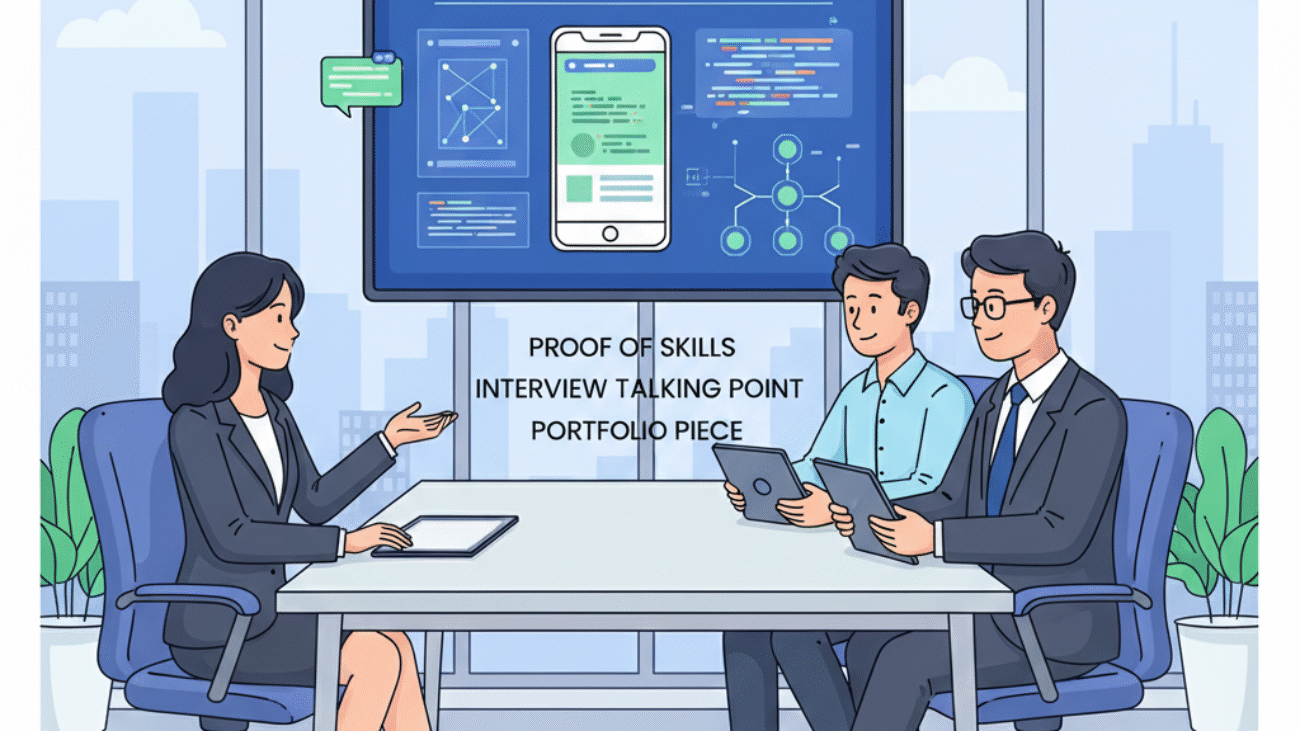Are you an IT student wondering how to stand out in a competitive job market? Or perhaps an educator looking to make learning more impactful? The answer often lies in the humble academic project. More than just an assignment, these projects are dynamic tools that shape careers, foster innovation, and bridge the gap between classroom theory and real-world industry demands.
Let’s delve into the complex roles and amazing influence of academic assignments within the IT sector.
- At Hiring & Placement: Your First Impression Counts
For new graduates, a school project isn’t merely a bullet on your resume—it’s likely your strongest case for why you should work there.
Evidence of Competence: Recruiters do not want only good grades; they want to know whether you can implement what you have learned. Your project is the best way to show your hands-on understanding of programming, databases, networking, AI, and so forth in actual situations.
Talking Point during Interviews: Be ready with answers such as, “Tell me about your project.” This is your chance to highlight your knowledge, problem-solving skills, and teamwork capabilities to both technical and HR panelists.
Portfolio Piece: A project done well serves as a concrete portfolio piece, making your resume stand out above the rest, particularly for people new to the career path.
- Skills Development: Beyond the Textbook
Academic projects are your own training ground, providing priceless experience working hands-on that textbooks just can’t offer.
Hands-on Practice: Rather than simply reading about React, Python, or AWS, projects enable you to work hands-on with these tools, languages, and frameworks. Practical exposure makes theoretical knowledge stick.
Teamwork Experience: The majority of projects are team-oriented, providing invaluable experience with collaboration software, version control (hello, Git!), and project management fundamentals.
Problem-Solving Attitude: You’ll get to know how to frame problems, design solutions, debug endlessly, and finally, deliver results—exactly the same way you’ll have to go about any IT role.
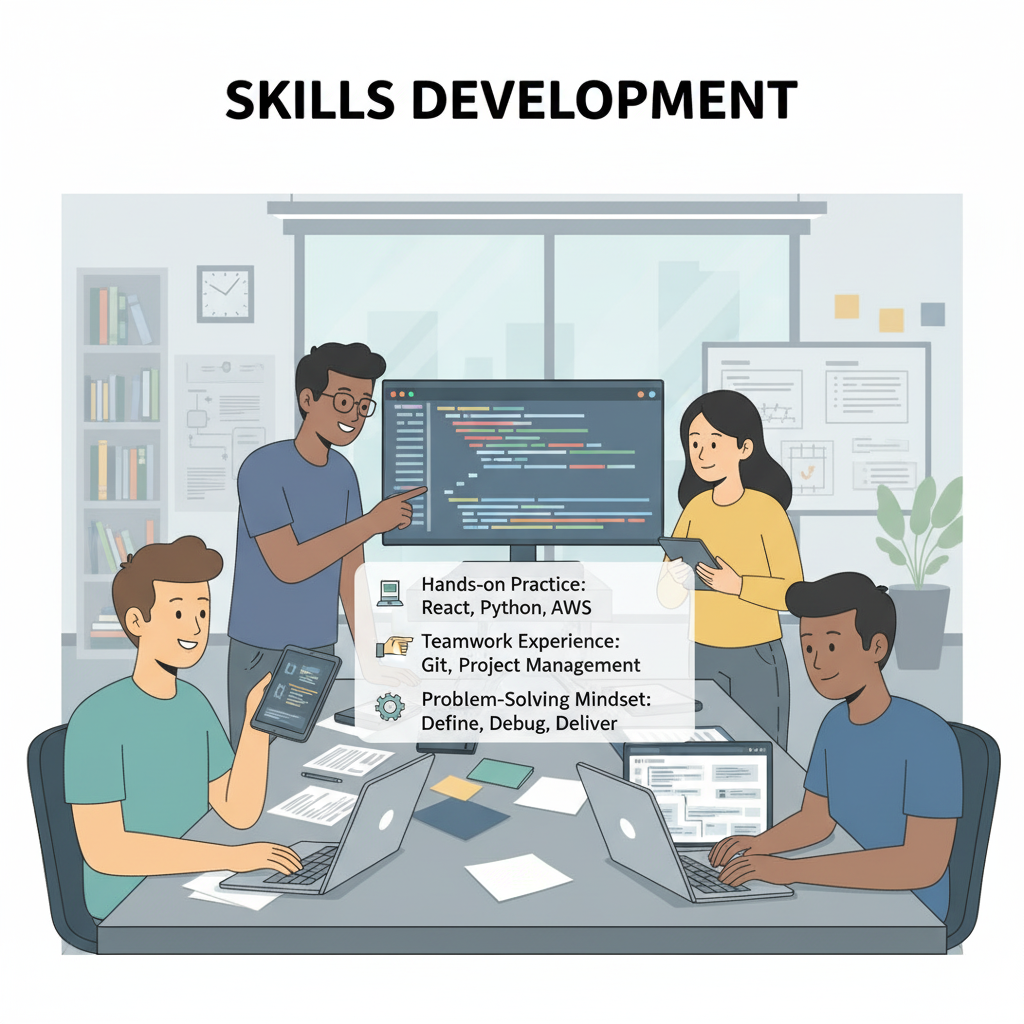
- Industry Relevance: Bridging the Gap
Carefully designed educational projects are not merely scholastic exercises; they are immediate conduits to industry preparedness.
Bridging Industry and Academia: These projects tend to replicate actual tasks that are used in IT firms, whether constructing web applications, mobile applications, AI models, or cybersecurity solutions.
Domain Exposure: Initiatives in trendy domains such as cloud computing, AI, cybersecurity, DevOps, and data analytics indicate that you’re up to date with technological trends to businesses.
Work-Readiness: Employers like to hire candidates who can transition smoothly. Projects show that you already have an understanding of industry workflow and expectations.
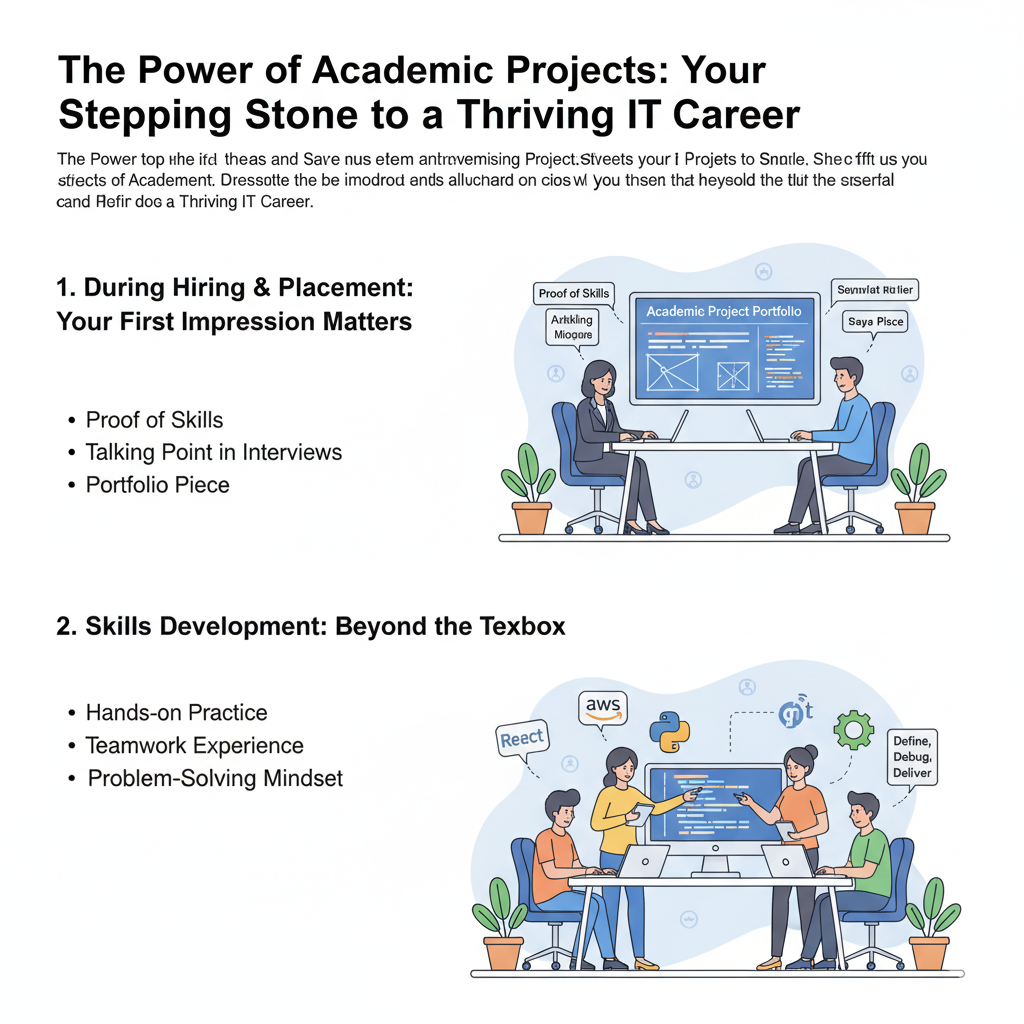
- For the Company Itself: A Win-Win Partnership
- It’s not only the students who gain! When corporate ITs interact with academic projects, it becomes a two-way beneficial ecosystem.
- Companies benefit:
- New Concepts and Research Findings: Students tend to bring new ideas and original methods.
- Early Talent Discovery and Recruitment: It is a great means of identifying high potential candidates early.
- Cost-Effective Prototypes: Students can assist in creating prototypes for new products at minimal cost.
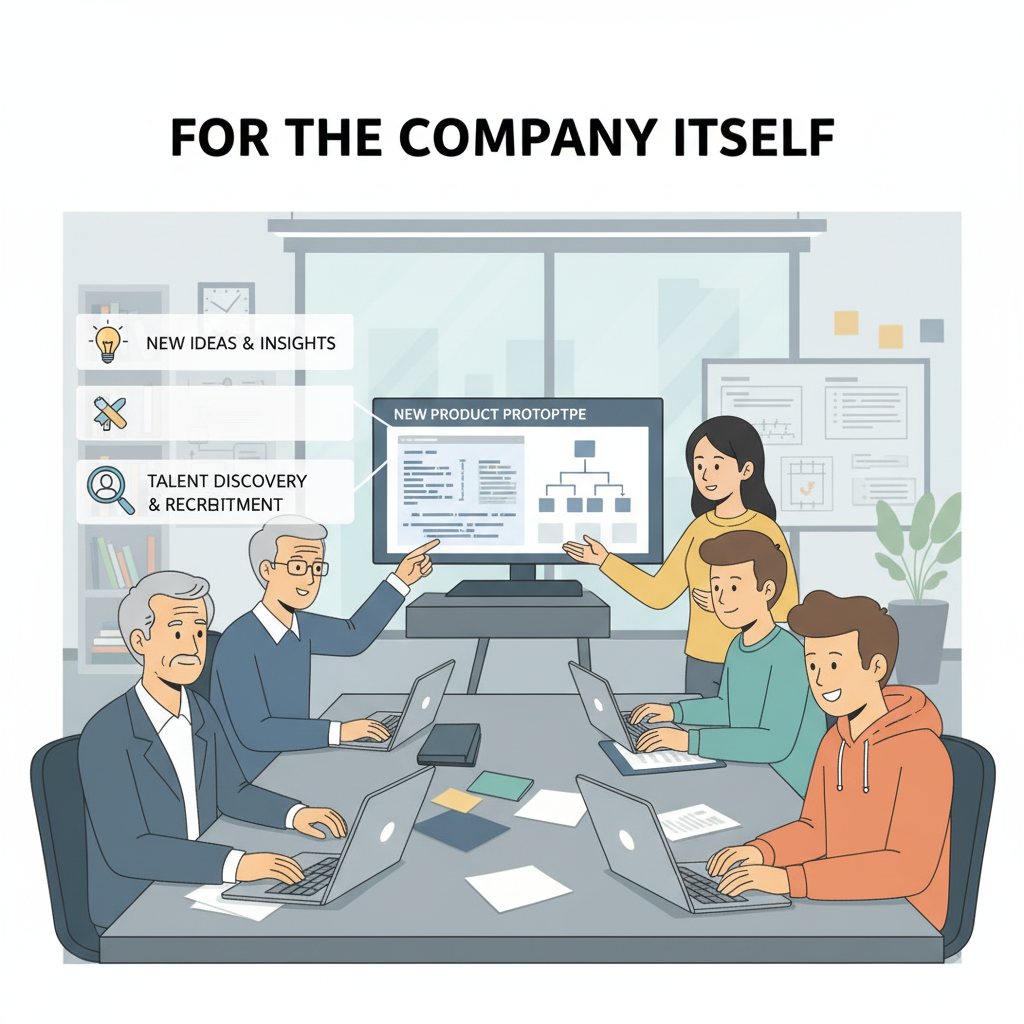
Academic Project Strategies: Your Blueprint for Success
Not every project is equal. Learning various strategies will assist you in selecting the correct path for your learning and career objectives.
- Research-based Projects:
- Strategy: Intensive research through surveys, experiments, or literature reviews.
- Goal: Create new knowledge, analyze trends, or validate hypotheses.
- Example (IT): Research on “Cybersecurity Threat Detection using Machine Learning.”
- Design & Development Projects:
- Strategy: Develop a new product, system, or tool.
- Goal: Real-world application of software, hardware, or system design skills.
- Example (IT): Creating a mobile app for ordering food online.
- Case Study / Problem-solving Projects:
- Strategy: Work through a real-world problem step by step and propose/implement solutions.
- Goal: Enhance decision-making and problem-solving skills in realistic contexts.
- Example (IT): Examining database scalability in an e-commerce website.
- Simulation & Modeling Projects:
- Strategy: Employ simulations or models to mimic real-world scenarios.
- Goal: Grasp system behavior under various conditions.
- Example (IT): Network traffic simulation to analyze DDoS attack prevention.
- Strategy: Develop and experiment with a pilot-scale version to test feasibility.
- Goal: Innovation, proof of concept, and testing ideas.
- Example (IT): Proof-of-concept for a voice-operated home automation system.
- Interdisciplinary / Collaborative Projects:
- Strategy: Integrate knowledge across multiple disciplines (e.g., IT + Business, IT + Healthcare).
- Goal: Demonstrate how IT applies to various industries.
- Example: “AI-powered Healthcare Chatbot.”
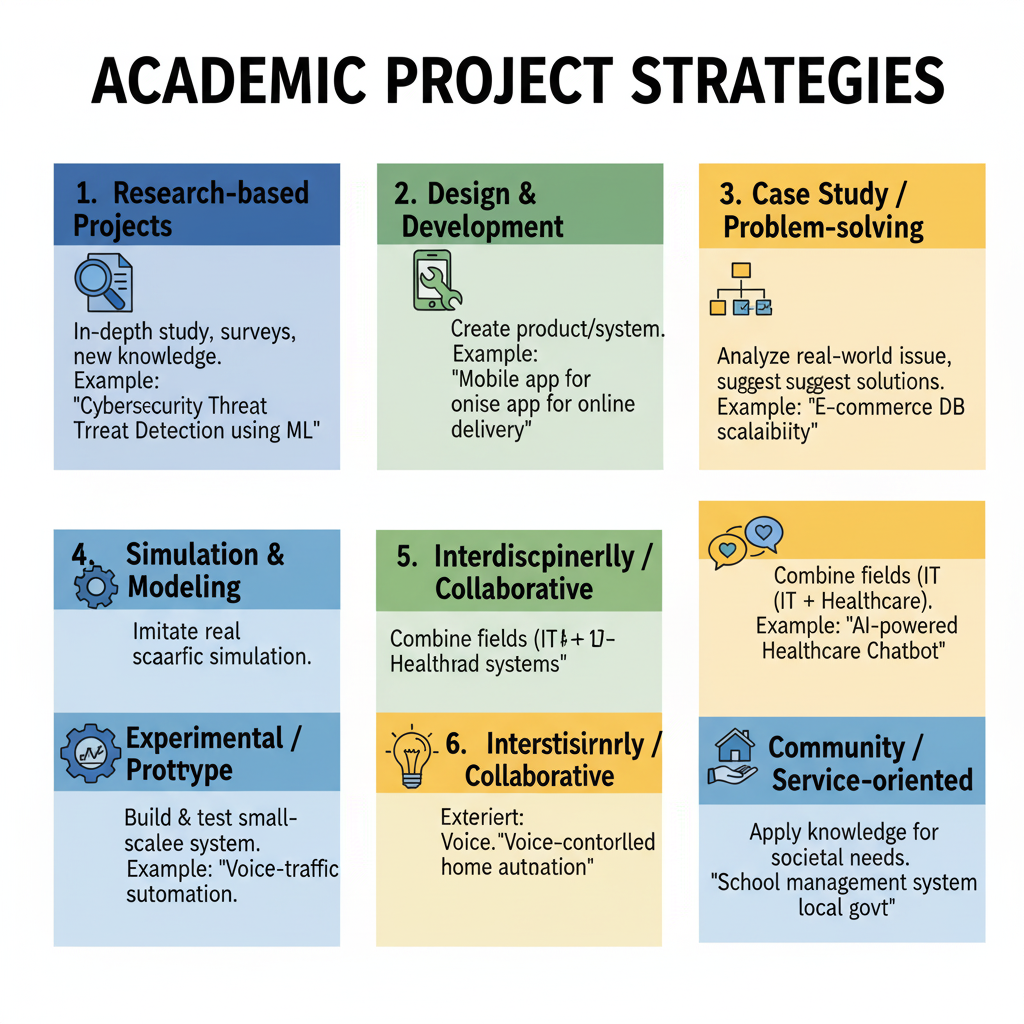
The Challenges of Academic Projects: Navigating the Obstacles
While extremely useful, university projects also have their drawbacks. Preparing for these can assist you in overcoming them successfully.
- Topic Selection: Selecting a valid, innovative, and pragmatic topic may be challenging. Don’t select too general or too specific topics.
- Limited Technical Knowledge: You may not have complete knowledge of some tools or languages. Welcome the learning curve!
- Resource Shortages: Availability of software, cloud space, or data can be a problem. Be creative and seek open-source options.
- Time Management: Work vies with classwork, exams, and internships. Organize carefully to stay away from last-minute frustrations.
- Teamwork & Cooperation Problems: Miscommunication and uneven work are issues. Learn tools such as Git for version control and work proactively to manage the team.
- Research & Documentation: Code is not the only thing! Good report writing, citation, and presentation are essentials.
- Innovation vs. Feasibility: Be creative, but temper it with what’s realistically within your limits.
- Testing & Deployment: Coding shouldn’t be the end goal of projects. Adequate testing, debugging, and deployment are necessary for a full solution.
- Evaluation Pressure: Prioritize actual learning, not grades, to eschew shortcuts such as plagiarism.
- Industry Relevance: Make sure your project is relevant to today’s industry needs in order to gain the most value for job placement.
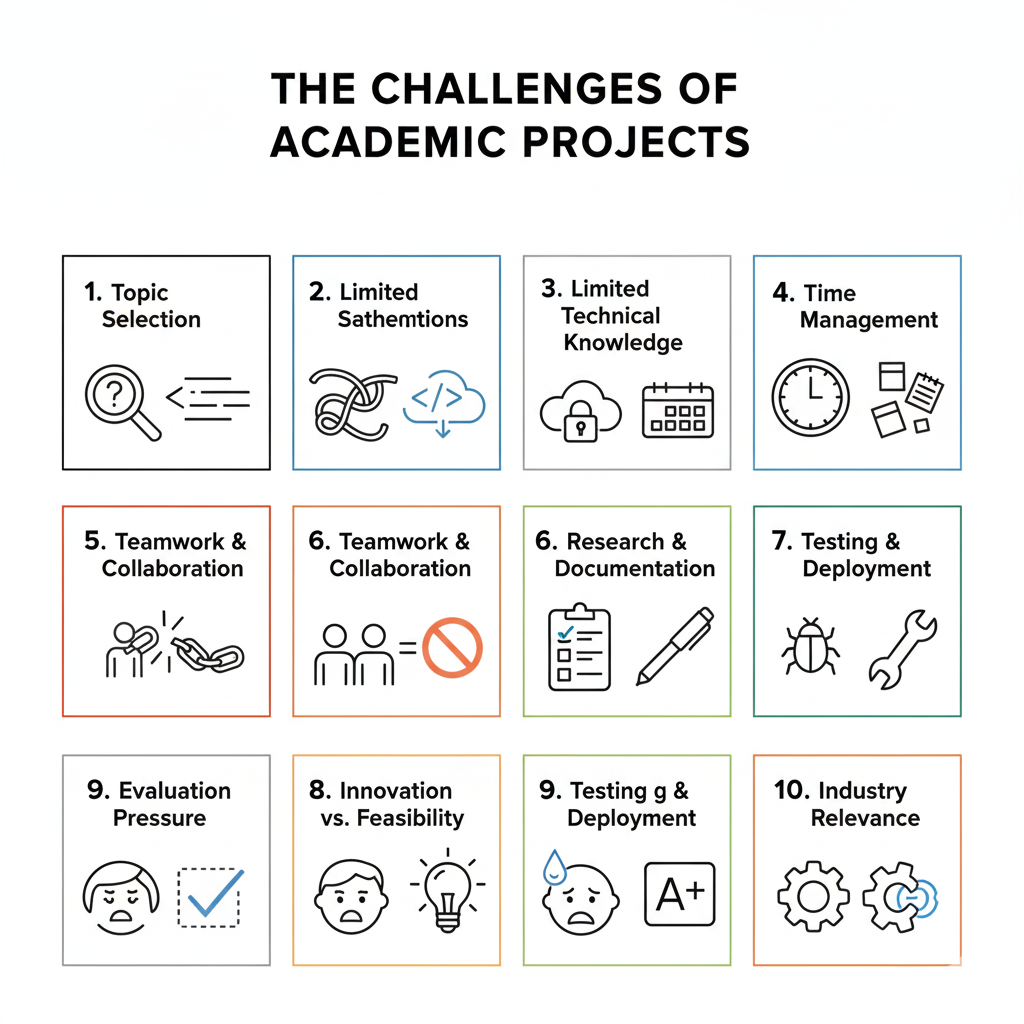
The Unmistakable Impact of Academic Projects
The ripple effect of an excellent academic project spreads much wider than just the individual student.
- On Students:
- Developing Skills: Practical experience sharpens technical skills.
- Problem-Solving Skills: Projects instill analytical thinking and solution development.
- Building Confidence: Completions give a boost to self-confidence.
- Portfolio Strength: A valuable asset for resumes and professional profiles.
- Connecting Theory and Practice: Converts classroom ideas into practical knowledge.
- On Career and Employment:
- Interview Edge: A major competitive advantage for new graduates.
- Job Preparedness: Replicates actual workflows.
- Internship Opportunities: Opens doors to enriching industry experience.
- On Institutions:
- Academic Reputation: Highlighting innovative projects adds prestige.
- Industry Tie-ups: Develops collaborations with IT companies.
- Research Contributions: May result in papers, patents, and new concepts.
- On IT Companies and Industry:
- Talent Identification: Facilitates identification of skilled candidates at an early stage.
- Fresh Ideas: Students introduce creativity and fresh approaches.
- Prototype Development: Certain projects may lead to startups or new company products.
Academic assignments are not just tasks; they are nurseries for potential, creativity, and professional achievement. Take up the challenge, learn through the experience, and see how your assignments clear the path for an exceptional future in the world of IT!

